For the network shown in figure, points A, B and C are at potentials of 70 V, zero and 10 V respectively
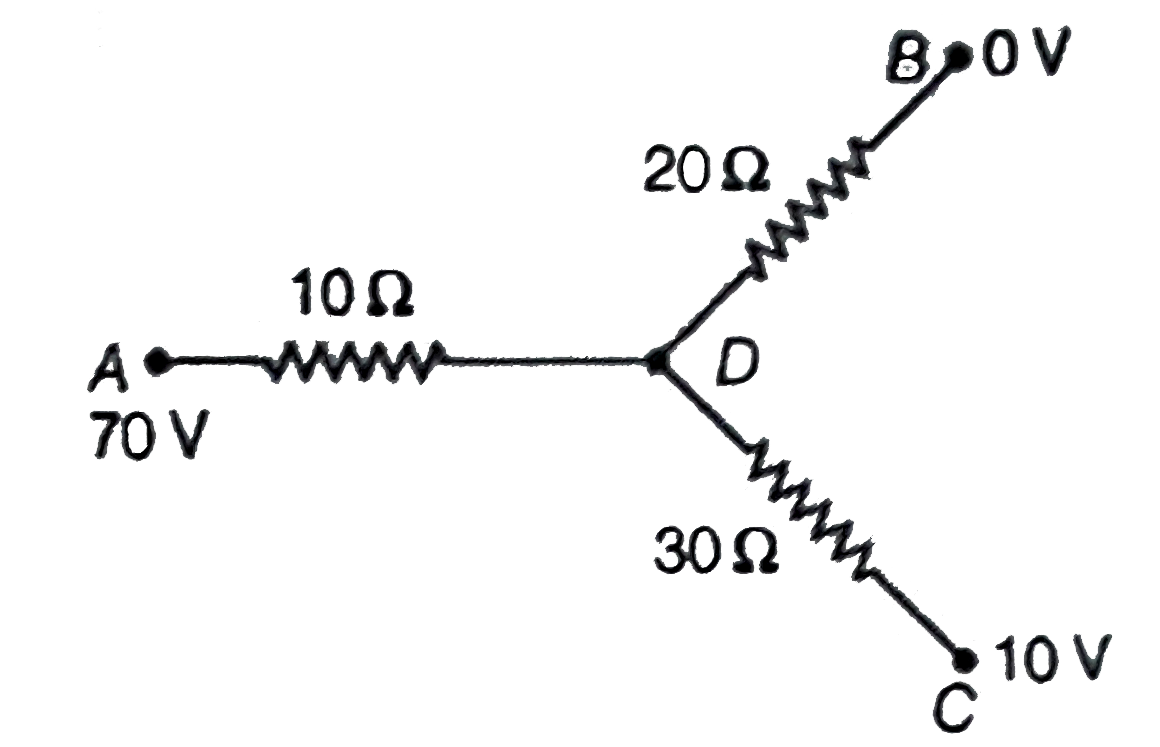
The potential of point D is 40 V
The currents in the sections AD, DB, and DC are in the ratio 3:2:1
The currents in the sections AD, DB, and DC are in the ratio of 1:2:3
The network draws a total power of 200 W
The correct Answer is:A, B, D
Step by step video, text & image solution for For the network shown in figure, points A, B and C are at potentials of 70 V, zero and 10 V respectively by Physics experts to help you in doubts & scoring excellent marks in Class 12 exams.
Updated on:21/07/2023Topper's Solved these Questions
- CIRCUITSBook:RESNICK AND HALLIDAYChapter:CIRCUITSExercise:Practice Questions (Linked Comprehension)
Explore 11 Videos
- CIRCUITSBook:RESNICK AND HALLIDAYChapter:CIRCUITSExercise:Practice Questions (Matrix Match)
Explore 4 Videos
- CIRCUITSBook:RESNICK AND HALLIDAYChapter:CIRCUITSExercise:Practice Questions (Single Correct Choice Type)
Explore 33 Videos
- CENTER OF MASS Book:RESNICK AND HALLIDAYChapter:CENTER OF MASS Exercise:Practice Questions (Integer )
Explore 4 Videos
- CIRCULAR MOTIONBook:RESNICK AND HALLIDAYChapter:CIRCULAR MOTIONExercise:CHECK POINTS
Explore 6 Videos
Similar Questions
An electrolytic cell containing a solution of CuSO4 has an internal resistance of 1Ω. It is connected in series with 3 V battery of negligible resistance and a 4Ω resistance. The mass of copper which will be deposited on the copper electrode in 30 min is calculated. If 4Ω resistance is connected in parallel across the electrolytic cell and the same battery is used, the amount of copper deposited in 30 min is calculated ECE of Cu= 0.00033 g/C. Using Faraday's first law of electrolysis, the mass deposited on the copper electrode can be calculated.
For series connection of 4Ω resistor, the current flowing through electrolyte is
View SolutionMatch the following

View SolutionIn the circuit shown in the figure, the current through
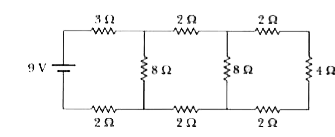
View SolutionThere object A,B and C are kept is a straing line a fritionlas horizental surface . These have masses have increase on 2m and m repectively . The object A move toward B with a speed 9 m//s and makes as electic collision with a there after B makes complately inclesis with C . All motion over on the same strangth line . Find the first speed of the object C
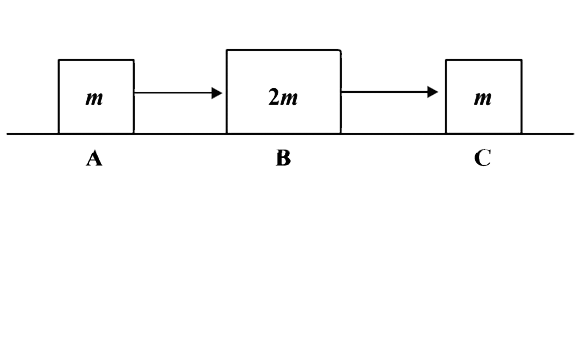
View SolutionA manufacturer of CD drives claims that the player can spin the disc as frequencly as 1200 revolutioins per minute. If the spinning is at this rate, what is the speed (in m/s) of the outer row of data on the disc, this row is located 5.6 cm from the center of the disc?
View SolutionFour identical capacitors are connected in series with a 10 V battery as shown in the figure. The point N is earthed. The potentials of points A and B are
View SolutionIn the network shown in fig. , points A, B, and C are at potentials of 70 V, 0, and 10V, respectively.
View SolutionA battery of e.m.f. 10 V is connected to resistance as shown in figure. The potential difference V_(A) - V_(B) between the point A and B is
View SolutionFour capacitors of equal cpacitances are connected in series with a battery of 10 V, as shown in figure. The middle point B is connected to the earth. What will be the potentials of the points A and C?
View SolutionFor the network shown in figure, points A, B and C are at potentials of 70 V, zero and 10 V respectively
View SolutionIn the circuit given here, the points A,B and C are 70 V, zero, 10 V respectively . Then,
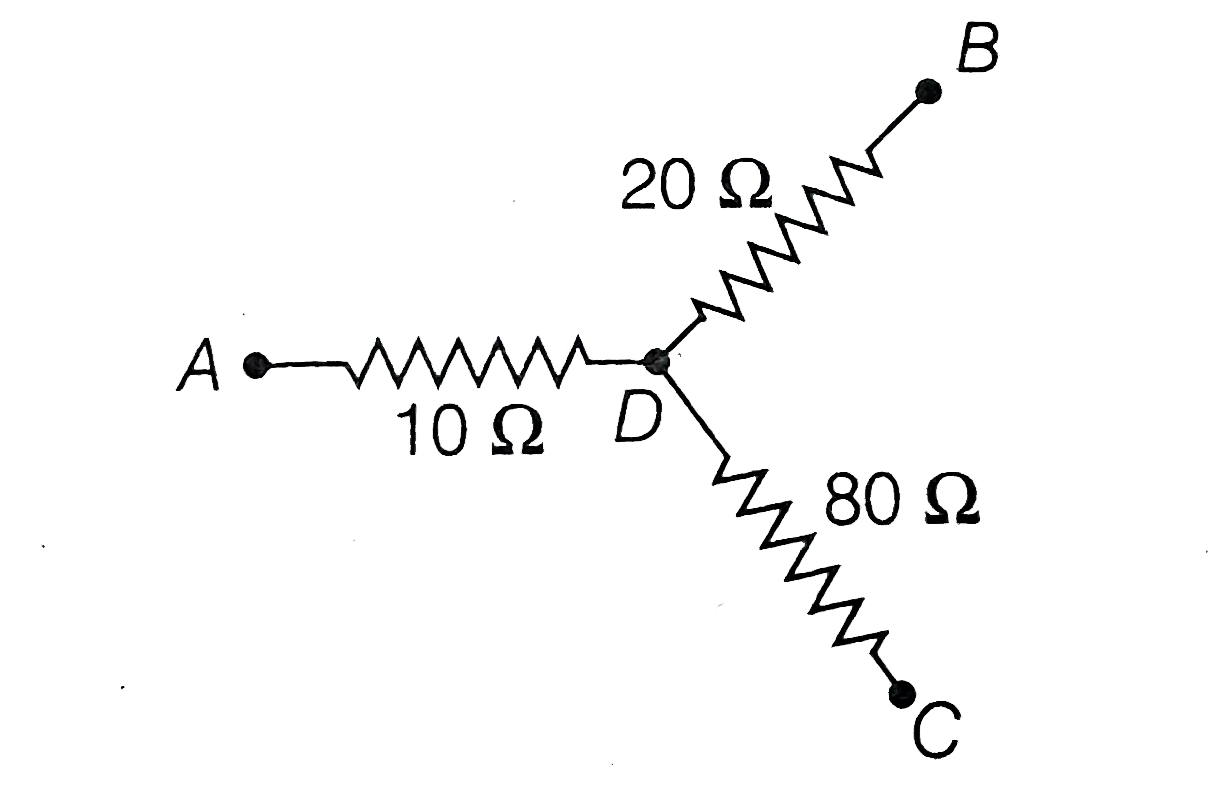
View SolutionConsider the circuit shown in the figure. Find the current in branch AO and OC . Potential of point A = 10 V of point B = 20 V and of C = 30 V.
View SolutionAs shown in figure, if the point C is earthed and the point A is given a potential of 2000 V, then the potential at point B will be :
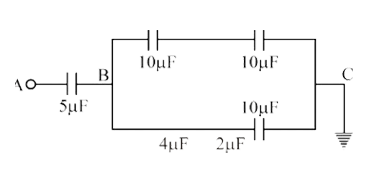
View SolutionA 220 V A. C supply is connected between points A and B as shown in figure what will be the potential differnece V across the capacitor ?
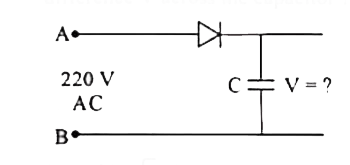
View SolutionIn the circuit given here, the point A,B and C are 70 V, zero, 10 V respectively. Then
View SolutionIn the network shown A, B and C are at potentials of 70 V, zero V and 10 V respectively. The false one is 1) Point D is at a potential of 40 V 2) The currents in the sections AD, DB, DC are in the ratio 3:2:1 3) The current in the section AD, DB, DC are in the ratio 1:2:3 4) The network draws a total power of 200 W
View Solution
